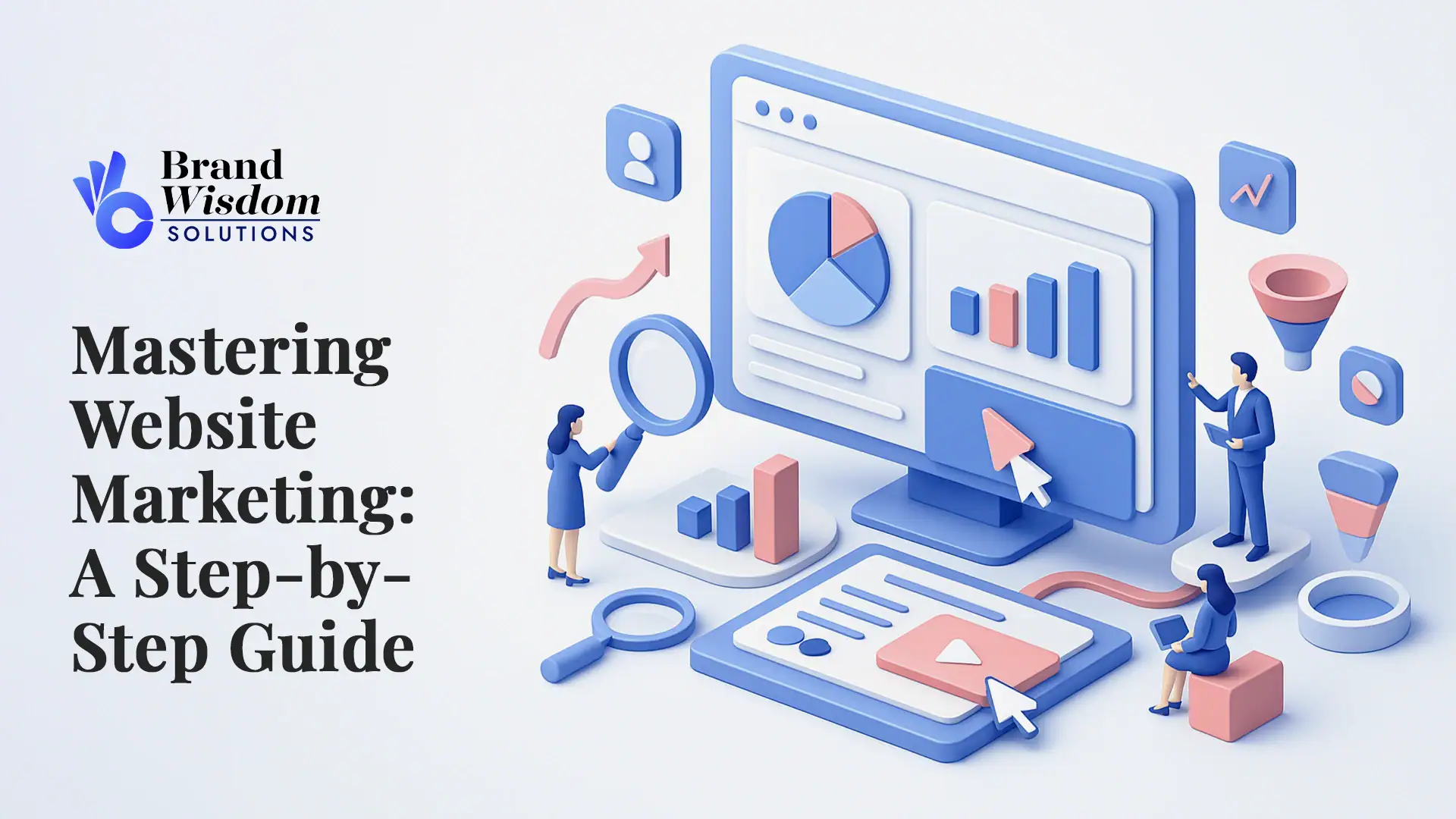Brand build is essential for success in today’s hectic and competitive marketplace. Just as having good “brand support” in your favorite game can boost your team’s “win rate,” a clear and consistent brand can enable you to beat your “enemy team” — your competition. Consider your brand a beacon, leading your ideal customers through a sea of options.
This book will take you through a strategic plan to create a brand that not only gets noticed but also wins. If you want to know how to successfully create a strong presence in a busy marketplace, you’ve come to the right place. Building a successful brand takes careful planning, creativity, and connection with your target market.
By following the proven strategies in this blog, you’ll learn how to elevate your brand identity, connect with your ideal customers, and confidently navigate your way to long-term success.
Understanding the Basics of Brand Building

What is building a brand? It’s so much more than a logo or slogan. Consider it like designing a character for a video game. You choose what they look like, what they can do, and who they are. Similarly, you build your brand. With a consistent message, clean visuals, and a nice customer experience, you define the way people view and feel about your company.
This perspective builds trust and familiarity, which are critical when individuals make decisions. When brand building is properly executed, it builds loyal fans who not only purchase from you but also advocate for your brand.
What is Brand Building and Why is it Important?
Brand building is the meticulous manner of establishing your brand’s image as powerful in the market. It’s akin to choosing the correct “runes” to enhance your champion’s “stats”. It entails nurturing your brand’s strengths, which are its unique strengths and values. This makes your brand climb to a higher “tier” in the minds of the individuals you aim to reach.
In a crowded marketplace, standing out matters. A strong brand gets you noticed and resonates with your audience on an emotional level. It tells your story, demonstrates your values, and makes a positive impression that can influence purchasing decisions.
Brand creation is not a one-off task but a continuous process. Similar to when you play games and design your approach based on the game, you need to transform and refresh your brand so that you remain significant and maintain your advantage over others.
Key Components of a Successful Brand Strategy
Selecting the appropriate “runes” can assist you in achieving the “emerald” level in your favorite game. Likewise, an effective brand build strategy relies on some crucial components. These components come together to establish a solid brand identity.
First, understand your target audience well. Consider whom you would like to reach out to on platforms such as “Twitch” or via other marketing strategies. What do they require? What do they prefer or find challenging? This is the basis of your brand messaging and how you approach them.
Second, develop a distinctive brand voice and personality. This involves choosing your tone, language, and style. Be consistent across all channels. A strong and memorable brand build will make you stand out from the competition.
Analyzing the Market and Competitors for Effective Brand Build

Before you begin your brand construction, you should know the landscape you’re entering. As you would survey the terrain and learn about your adversary before a match, you market research and competitor analysis provide you with informed knowledge to frame your strategy.
This involves determining who your competition is, what they do well, where they fail, and identifying gaps in the market that your brand can occupy. A thorough analysis sets the stage for a successful brand build, uncovering opportunities to differentiate and positioning your brand for long-term success.
How to Conduct a Market Analysis for Branding
Doing a complete market analysis is akin to scrutinizing a “detailed breakdown” of your “enemy champion” prior to playing a game on “Twitch.” It’s an essential starting point. Doing this enables you to glimpse your target audience, understand what they desire, and inspect your rivals.
Begin by researching your sector, emerging trends, and your customers. Employ tools such as social listening, surveys, and industry reports to obtain useful data and information. Pay attention to your competition – observe their prices, marketing strategies, and brand perception.
Once you know your market and your competitors’ weaknesses and strengths, you will see great ideas on where to put your own brand. You will also be able to develop a unique selling proposition that will cut through.
Learning from Competitor Brand Strategies
Analyzing your competition provides you with a lot of valuable information. Compare their marketing campaigns, brand messaging, and the way they display their visuals. See what resonates with their audience and what can be improved. You can imagine this as learning a solid “combo” from a good “Swain” player who executes “Liandry’s Torment” properly.
Observe the patterns in their branding. Do they present themselves as high-end brands or affordable ones? How do they communicate their brand history and values? By being aware of their approaches, you can learn valuable lessons and make mistakes.
Don’t forget, it is not a copycat approach. Rather, learn and adapt. Utilize what you learn to enhance your brand strategy. Develop a unique identity that makes you stand out in the marketplace.
Identifying Your Target Audience for a Strong Brand Build

Knowing who your target audience is key to a successful brand build. These are the individuals you need to reach, engage with, and eventually turn into loyal customers. Their needs, preferences, and challenges should be the foundation of your brand strategy.
Think about their age, interests, lifestyle, and online behavior. What do they use most? What are their motivations, and what wakes them up in the middle of the night? The more you know your ideal customer, the more resilient your brand build will be. This knowledge allows you to customize your messaging, visual identity, and customer experience to develop a lasting and meaningful bond.
Developing a Unique Brand Personality and Voice

Your brand personality is what makes you memorable and relatable. Similar to choosing a champion with a unique playstyle, your brand personality attracts a particular audience. Are you bold, sophisticated, or playful? Establishing these helps to keep everything on the same page with all of your messages and strengthens your brand build.
Your website, social media posts, and customer service all have to sound the same brand voice. This consistent voice creates familiarity and credibility with your audience. It makes your brand stand out in their minds.
Differentiating yourself from competitors through branding elements (logo, colors, etc.)
By designing your branding aspects such as your logo, color schemes, and design style carefully, you are able to differentiate your brand from the rest. These images define the way people perceive your brand. In order to make your brand stand out in a crowded market, it is necessary to have a distinctive and recognizable logo, select unique brand colors, and maintain consistency across all brand platforms. Utilizing these branding components effectively will enable you to establish a well-defined brand identity and make lasting connections with your audience.
Continuously evolving and adapting your brand to stay relevant and stand out in the market
The corporate world is constantly evolving, just like how “minions” adapt to varying levels of games. What today may no longer be applicable tomorrow. To remain competitive, you have to constantly update and reform your brand, just like rearranging your champion’s build. That is, you need to be aware of what is going on in your niche, hear out your audience, and be prepared to enhance your brand strategy.
Be sure to review your brand rules, messages, and design frequently. Is your brand still relevant to your target audience? Are your brand values still relevant? Are there new platforms or channels where you should have a presence? Being adaptable keeps your brand fresh and interesting.
As with employing “Sear” following “Blaze” for increased damage, building your brand needs wise adjustments to remain at the forefront. The continuous effort makes your brand up-to-date, catches attention, and draws your desired audience.
Integrating Your Brand into Your Business Strategy

Placing your brand everywhere in your company is highly critical. This enables you to create a strong and clear brand build experience. You have to ensure that your brand messaging, values, and personality are aligned with your internal culture, customer service, and daily operations.
When you live your brand from the inside out, you give your customers a genuine and seamless experience at every touch point they have with you. Consistency creates trust and loyalty. It also enhances your brand’s reputation, which fuels growth for your company.
Creating a unique selling proposition
Your unique selling proposition (USP) is what separates you from the “enemy team” in your market. It is the solid reason why buyers should choose your “brand support” over the competition. It can assist you in enhancing your “win rate” in making customers loyal to you.
Your USP may be a unique benefit, a distinctive feature, excellent customer service, or a combination of these. It must be concise and simple enough for your target market to comprehend. It should address the value you can bring to the table and why you are the superior choice.
Consider what’s unique about your brand. How do you help customers differently from other companies? What specific need do you answer uniquely? If you identify and communicate your USP effectively, you provide potential customers with compelling grounds to make your brand, not another’s, their own choice.
Developing consistent branding across all platforms
Consistency is the key to establishing a powerful and identifiable brand. To understand the “detailed breakdown” of an “enemy champion”, you require a “detailed breakdown” of your “brand’s abilities” on all platforms. This gives your audience a smooth and coherent brand experience regardless of where they find your brand.
From your website and social media channels to your marketing collateral and customer service communications, your brand messaging, visual identity, and tone of voice need to be consistent. This consistency strengthens your brand identity and creates trust with your audience.
Think about having a brand style guide that describes the following:
| Element | Description |
| Logo Usage | Specific guidelines for using your logo, including size, placement, and variations. |
| Color Palette | A detailed breakdown of your brand colors, including hex codes for digital use. |
| Typography | The specific fonts used for your brand’s logo, headlines, body copy, etc. |
| Imagery Style | Guidelines for the overall style of images and photography used for your brand. |
| Voice and Tone | The tone of voice used in all brand communications, ensuring consistency. |
Conclusion
When the market is competitive, a well-defined brand strategy is crucial. It differentiates you from others. Begin with the fundamentals. Study the market, identify the target audience, and craft a distinctive brand voice. All these will ensure you have a brand that resonates with your customers. Remember that the brand will need to adapt and integrate into your business strategy for the long term. Consistency is paramount on all platforms. Own what makes you different and build a solid brand narrative. This narrative must grab the attention of your audience. Be different, be current, and thrive in a crowded marketplace with a solid brand plan.
Frequently Asked Questions
What are the first steps in developing a brand strategy?
Before you start making your “brand support,” begin by conducting a “detailed breakdown” of your target market and your “enemy team.” Discover what your “brand’s abilities” are, as well as your special strengths and values. Consider how these elements can assist you in attaining a superior “win rate” in the market.
How can small businesses stand out with their brand in a crowded market?
Small enterprises can become the “emerald” “tier” by capitalizing on their niche. They must pick the correct “runes,” that is, distinctive brand elements. You need to demonstrate what makes you different from the “enemy champion.” You must communicate clearly your distinctive value and always give excellent customer experiences.
What is a brand build strategy and why is it important in a crowded market?
A good brand strategy, much like a good “combo” from “Swain” with “Liandry’s Torment”, makes you stand out on high-traffic sites like “Twitch” and “Facebook.” That is developing an individual brand identity and message. This will resonate well with the target audience.
What are some key components of an effective brand build strategy?
Brand building is crucial for any company. Defining your brand’s voice, mission, and visual identity are some of the most important aspects of this. You also have to adapt to the market like “minions.” Furthermore, employing intelligent strategies such as “Sear” and “Blaze” will keep you ahead of your rivals, just as the “Morellonomicon” is crucial for some champions.





